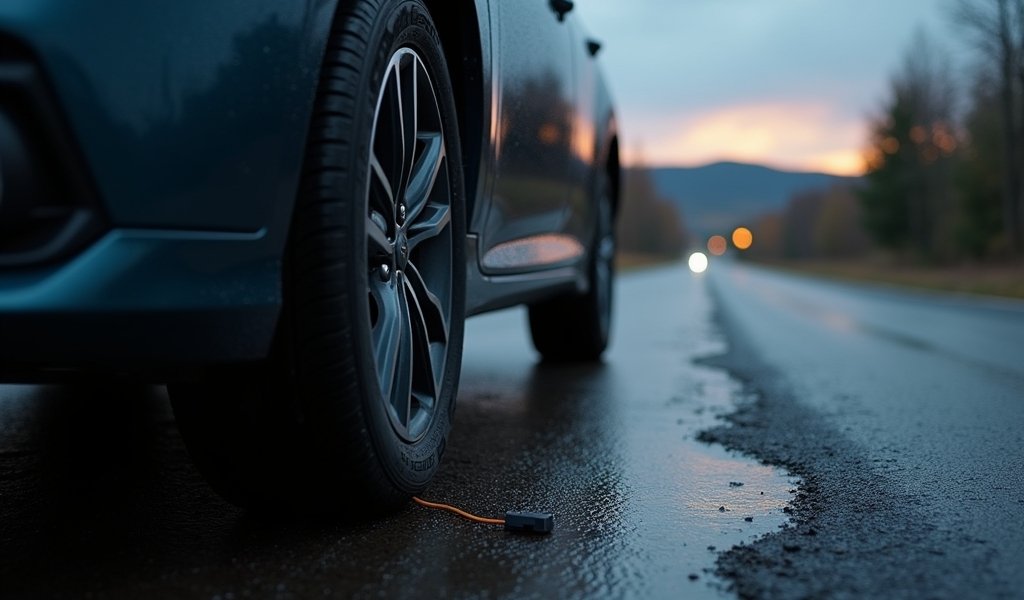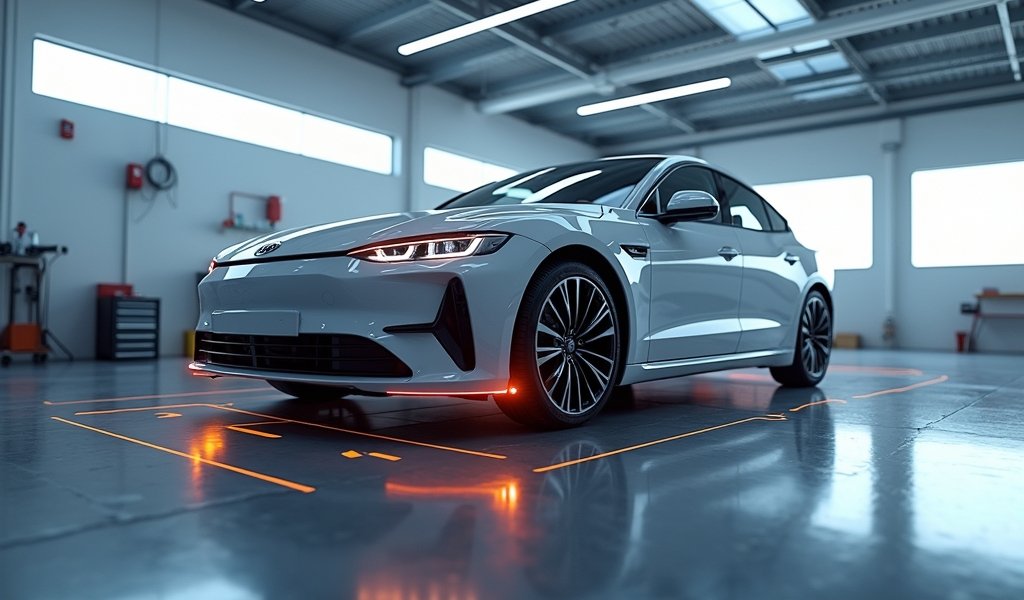Overview
This article explains how vehicle stability control sensors work as critical safety components that prevent accidents by detecting and correcting skids, and outlines when these sensors need alignment (after suspension work, collisions, or when warning lights appear), the alignment procedure, and maintenance best practices. Properly aligned stability control sensors can reduce fatal crashes by 40%, making regular inspection crucial, especially after maintenance work, accidents, or when warning lights appear on the dashboard.
Table of Contents
- Understanding Stability Control: Your Vehicle’s Safety Guardian
- How Stability Control Sensors Work
- Warning Signs Your Stability Sensors Need Alignment
- When Stability Sensor Alignment Is Necessary
- DIY vs. Professional Sensor Alignment
- The Stability Sensor Alignment Procedure
- Common Problems and Troubleshooting
- Maintaining Your Stability Control Sensors
- Conclusion
- Frequently Asked Questions
Understanding Stability Control: Your Vehicle’s Safety Guardian
Picture yourself driving on a rain-slicked highway when suddenly your car begins to skid. In that heart-stopping moment, your stability control system kicks in, automatically applying precise braking to specific wheels and adjusting engine power to help keep you on your intended path. This isn’t magic—it’s modern automotive engineering at its finest.
Electronic Stability Control (ESC)—also called Dynamic Stability Control or Vehicle Stability Assist depending on your car’s manufacturer—has become standard equipment on all new vehicles since 2012. According to the Insurance Institute for Highway Safety, this technology reduces fatal single-vehicle crashes by about 40%. That makes it one of the most significant safety innovations since the seatbelt.
But here’s what many drivers don’t realize: this sophisticated system relies entirely on properly aligned sensors to do its life-saving work. When these sensors fall out of alignment, your safety net develops dangerous holes. I’ve seen countless vehicles roll into my shop with compromised stability systems after routine maintenance or minor collisions that owners didn’t realize affected these crucial components.
Let’s dive into what you need to know about keeping your vehicle’s stability control sensors properly aligned—because understanding this invisible technology could literally save your life someday.
How Stability Control Sensors Work

Your vehicle’s stability control system works like a vigilant co-pilot, constantly monitoring your car’s movement and comparing it to your steering input. When it detects a discrepancy—like if you’re turning the wheel left but the car is sliding straight ahead—it jumps into action.
The system relies on a network of sophisticated sensors working in perfect harmony:
- Yaw Rate Sensor: This measures how quickly your vehicle rotates around its vertical axis—essentially how much your car is spinning. Located typically near your vehicle’s center of gravity, it’s like a digital compass that detects the beginnings of a skid.
- Lateral Acceleration Sensor: Think of this as your car’s inner ear, measuring side-to-side forces as you corner. It helps the system understand when those forces might be pushing your vehicle toward instability.
- Steering Angle Sensor: Mounted on the steering column, this tracks exactly where you intend to go by measuring the position and turning rate of your steering wheel.
- Wheel Speed Sensors: Each wheel has its own dedicated sensor monitoring its rotation speed. When one wheel spins faster than the others, it often indicates slippage.
These sensors feed data to the stability control module—the system’s brain—which compares what’s actually happening with what should be happening based on your steering input. The beauty of this system is its incredible speed, making calculations and adjustments in milliseconds, often before you’ve even registered a problem.
I recently worked on a Mazda CX-5 whose owner had experienced a near-miss on an icy bridge. She described how the car seemed to straighten itself when she hit a patch of black ice. “It felt like someone else had their hands on the wheel for a split second,” she told me. That’s exactly what good stability control should feel like—subtle assistance that keeps you on track.
But this remarkable performance depends entirely on sensors that are properly calibrated and aligned. When they’re not, the system either won’t help when needed or might intervene inappropriately—neither of which you want when your safety’s on the line.
Warning Signs Your Stability Sensors Need Alignment
Your vehicle has ways of telling you when its stability control sensors have drifted from proper alignment. Recognizing these warning signals early can prevent more serious issues down the road. Here are the telltale signs you shouldn’t ignore:
- Dashboard Warning Lights: The most obvious indication is an illuminated stability control warning light. This amber symbol typically shows a car with skid marks. Sometimes it appears alongside ABS or traction control warnings—what I call “the dashboard Christmas tree effect.”
- Unnecessary System Activation: If your stability control activates during normal driving—particularly on smooth, dry roads with gentle curves—your sensors are likely feeding incorrect information to the control module. You might notice unexpected braking at individual wheels or sudden reductions in engine power.
- Inconsistent Handling: Vehicles with misaligned sensors often exhibit unpredictable handling. Your car might feel normal one moment, then suddenly seem to have a mind of its own—especially during cornering or lane changes.
- System Shutdowns: In some cases, when the vehicle’s computer detects significant sensor discrepancies, it will deactivate the stability control entirely. This safety measure leaves you without this important protection.
- Erratic Speedometer Readings: Since wheel speed sensors play roles in both stability control and speedometer function, alignment issues sometimes cause fluctuating speed readings.
One of my customers perfectly described her experience with misaligned sensors as “driving with an overprotective backseat driver who keeps grabbing the wheel—sometimes when I need help, but often when I don’t.” That frustration, combined with potential danger, makes addressing sensor alignment issues promptly extremely important.
If you notice any of these symptoms, especially after suspension work, wheel alignment, or a collision, it’s time to have your stability control system professionally diagnosed. Ignoring these warning signs is like continuing to drive with your eyes half-closed—you might get away with it for a while, but the risks simply aren’t worth it.
When Stability Sensor Alignment Is Necessary
Unlike your wheels, stability control sensors don’t need regular alignment as part of routine maintenance. However, certain events and circumstances make recalibration necessary. Knowing when to check these critical components can prevent both annoying false activations and dangerous system failures.
Here’s when you should consider stability sensor alignment:
- After Suspension Work: Any modification to your vehicle’s suspension geometry—whether through wheel alignment, component replacement, or adjusting ride height—changes the relationship between your sensors and the vehicle’s movement. This altered perspective requires recalibration.
- Following Collision Repairs: Even minor fender benders can affect sensor positioning. The impact force can move sensors or mounting brackets by tiny fractions—enough to throw off the precise calculations your stability system relies on.
- Component Replacement: When any part of the stability control system is replaced—whether it’s a sensor, control module, or related component—alignment ensures the new part integrates properly with the existing system.
- Severe Road Impacts: Hitting deep potholes, striking curbs, or off-road driving can jostle sensors out of position. I recently serviced a Toyota Highlander where a single bone-jarring pothole impact was enough to misalign the yaw rate sensor.
- Age and Wear: Over time, mounting brackets can loosen, electrical connections can develop resistance, and sensors can drift from factory specifications. Vehicles over 7-10 years old often benefit from stability system inspection even without specific incidents.
A preventive approach to sensor alignment can save both money and potential safety issues. I always tell my customers that stability control is like an invisible insurance policy—you don’t think about it until you need it, but when that moment comes, you want it calibrated to perfection.
If you’ve recently had your tire pressure monitoring system reset or other work done that might affect vehicle dynamics, it’s worth asking your mechanic to verify your stability sensors are still properly aligned. An ounce of prevention is worth a pound of cure, especially when it comes to safety systems.
DIY vs. Professional Sensor Alignment

The question of whether to tackle stability control sensor alignment yourself or seek professional help depends on your technical skills, available tools, and vehicle complexity. Let me break down both approaches to help you make an informed decision.
What You Can Check Yourself
Even without specialized tools, there are several preliminary checks you can perform:
- Visually inspect sensor mounting locations for damage or loose connections
- Read diagnostic codes using consumer-grade OBD-II scanners
- Test for proper battery voltage at sensor connectors
- Monitor and document when symptoms occur (helpful for technicians later)
- Verify tire condition and pressure (often overlooked causes of stability issues)
These basic checks can save time and money by identifying obvious issues before seeking professional help. Just last month, I had a customer convinced he needed sensor alignment when a simple tire pressure adjustment resolved his stability control warning light.
When to Call the Pros
Professional help becomes essential in these situations:
- When specialized calibration equipment is required (increasingly common on newer vehicles)
- If your vehicle needs specific driving patterns or calibration fixtures
- When multiple sensors need simultaneous alignment
- Following significant collision repairs
- When diagnostic trouble codes specifically indicate sensor alignment issues
Professional stability sensor alignment typically costs between $150-$350, depending on vehicle complexity and the number of sensors requiring calibration. This might seem significant until you consider the cost of parts if you damage sensors during DIY attempts ($80-$400 per sensor) and the potential safety implications.
Modern vehicles, particularly those with adaptive cruise control and lane-keeping assistance, have increasingly integrated stability systems that require specialized equipment to calibrate correctly. These advanced driver assistance systems rely on perfectly aligned stability sensors to function safely.
As I tell my customers: Changing your oil is a great DIY project. Recalibrating the electronic systems that might save your life in an emergency? That’s when professional equipment and training really matter.
The Stability Sensor Alignment Procedure
While specific procedures vary by vehicle make and model, here’s what typically happens during a professional stability control sensor alignment. This insight will help you understand what you’re paying for and why it’s important.
Essential Tools and Equipment
Professional alignment requires specialized tools:
- Manufacturer-specific diagnostic scanner with sensor calibration capabilities
- Digital level and angle finder (for precise sensor positioning)
- Calibrated torque wrench for small fasteners
- Vehicle-specific service information with exact sensor specifications
- Flat, level alignment surface
- For newer vehicles, specialized calibration fixtures or targets
The Alignment Process
The process typically follows these steps:
- Vehicle Preparation: The technician ensures the vehicle is at operating temperature, positioned on a perfectly level surface, and has properly inflated tires.
- Initial Scan: A diagnostic scan identifies exactly which sensors need attention and any related system issues.
- Mechanical Alignment: Physical adjustment of sensor mounting positions using digital measuring tools to achieve precise angles.
- Software Calibration: Using the diagnostic scanner, the technician initiates specific calibration routines that teach the control module the “zero point” or neutral position of each sensor.
- Dynamic Testing: Many vehicles require a specific driving pattern—straight-line acceleration, gentle turns, and gradual stops—to complete the calibration process. This “teaches” the system how the vehicle normally behaves.
- Verification: A final diagnostic scan and test drive confirms all sensors are communicating properly and the system activates appropriately.
During a recent alignment on a Honda CR-V, I found that the yaw rate sensor calibration required the vehicle to be positioned on a surface level within 1 degree of horizontal in all directions. This level of precision explains why proper equipment is so crucial to the process.
Modern vehicles with advanced driver assistance systems require even more precise calibration. These vehicles often have integrated sensor packages that control multiple safety systems, making professional alignment even more critical. According to research from AAA, properly calibrated safety systems can reduce crash risks significantly, but miscalibrated systems may actually create new safety risks.
Common Problems and Troubleshooting
Even with proper alignment techniques, some vehicles present unique challenges. Understanding these common issues can help you communicate effectively with your technician or navigate DIY troubleshooting.
Persistent Error Codes
When error codes return immediately after clearing them, consider:
- Intermittent electrical connections (check for corrosion or damaged wiring)
- Sensor mounting deformation preventing proper positioning
- Interference from aftermarket accessories (especially those with magnets)
- Control module memory issues requiring battery disconnection to fully reset
I recently worked on a Mercedes-Benz with persistent yaw rate sensor codes. After multiple alignment attempts, we discovered a phone mount with a powerful magnet was creating enough electromagnetic interference to disrupt sensor readings.
Calibration Failures
When the system refuses to accept calibration values:
- Verify the vehicle is on a truly level surface
- Ensure all related systems (ABS, power steering) are functioning properly
- Check if software updates are required before calibration
- Confirm battery voltage remains steady throughout the procedure
- Look for aftermarket modifications affecting vehicle dynamics
Environmental Factors
Several external conditions can affect both the alignment process and ongoing sensor function:
- Extreme temperatures can skew sensor readings during calibration
- Significant elevation changes alter the baseline for accelerometer calibration
- Electromagnetic fields near power lines can interfere with calibration
- Road surface variations during dynamic calibration routines
One particularly tricky case involved a Ford Explorer that showed stability control issues only when fully loaded with passengers. The added weight changed the suspension geometry just enough to push the sensors beyond their calibrated range. A recalibration specifically performed with the vehicle loaded solved the problem.
Remember that stability control sensors speak a subtle language of millimeters and milliseconds. When they’re trying to tell you something’s wrong, listening carefully to the pattern of symptoms often reveals the solution.
Maintaining Your Stability Control Sensors
Once your stability sensors are properly aligned, keeping them functioning optimally requires some attention. These preventive measures will extend calibration life and ensure your safety systems work when you need them most.
Regular Inspection Habits
- Include stability system checks in your annual maintenance routine
- After severe weather or flooding, inspect sensor connections for moisture damage
- Following any impact (even minor parking lot bumps), monitor for warning lights
- Pay attention to changes in vehicle handling that might indicate sensor drift
- When replacing tires, verify the new ones match specifications for diameter
Protective Driving Practices
Simple driving habits can extend sensor alignment life:
- Approach speed bumps at angles to reduce impact shock
- Avoid driving through deep water that might reach sensor locations
- When possible, steer around rather than through potholes
- Use caution on extremely rough roads
- Allow brief warm-up periods before aggressive driving in extreme temperatures
In winter climates, pay special attention to wheel speed sensors. Snow and ice buildup around wheel wells can interfere with these sensors’ function. A quick spray with compressed air or water (when temperatures permit) can prevent false activations.
I recommend keeping a simple vehicle health log that tracks when warning lights appear and under what conditions. This information is invaluable for diagnosing intermittent issues and can save diagnostic time if problems develop later.
Remember that your stability control system is a silent partner in your driving safety. Like any good relationship, it works best with regular communication and preventive care before small issues become big problems.
Conclusion
Your vehicle’s stability control system represents one of the most significant safety innovations in automotive history. These vigilant electronic sensors work tirelessly in the background, often intervening so subtly you might never realize they’ve helped you avoid a potential accident. Proper sensor alignment ensures this sophisticated system functions as designed—detecting and correcting stability issues in those critical split seconds when physics and human reaction time are working against you.
From the steering angle sensor tracking your intentions to the yaw rate sensor monitoring your actual path, each component plays a vital role in this synchronized safety ballet. I’ve seen firsthand how well-maintained stability systems have prevented countless accidents. I’ve also witnessed the consequences when these systems are neglected or improperly calibrated. The difference can literally be life-changing.
Remember that your vehicle’s stability control is most effective when all sensors are properly aligned, designed to complement rather than replace careful driving, and dependent on proper mechanical maintenance of suspension and tires. Whether navigating a rain-slicked highway or swerving to avoid a sudden obstacle, your properly aligned stability sensors stand ready to assist.
Take care of your stability control system, and it will take care of you when you need it most. In my two decades as a mechanic, I’ve come to believe that the best safety features are the ones you maintain before you need them.
Frequently Asked Questions
How often should stability control sensors be aligned?
Stability sensors don’t require regular alignment like wheels do. They typically need recalibration only after suspension work, collisions, component replacement, or if warning lights indicate a problem.
How much does stability control sensor alignment cost?
Professional alignment typically costs between $150-$350 depending on vehicle complexity and the number of sensors requiring calibration. This investment protects both your safety and your vehicle’s performance.
Can I drive with the stability control light on?
While the vehicle will still operate, driving with the stability control light on means you’ve lost a critical safety system. Have the issue diagnosed promptly, especially before driving in adverse weather conditions.
Will a dead battery affect stability sensor calibration?
Yes, complete battery power loss can sometimes reset control modules and affect calibration settings. After battery replacement or complete discharge, monitor for stability system warning lights.
Can aftermarket modifications affect stability control sensors?
Absolutely—modifications like lift kits, lowering springs, or non-standard wheel/tire combinations can all affect sensor calibration. Always have stability systems checked following any suspension modifications.


Pingback: All Wheel Drive System Calibration Guide - knowsyourcar.com